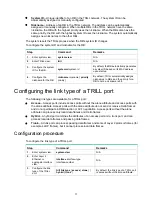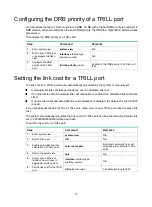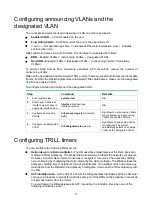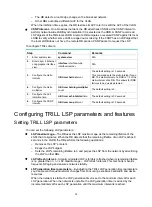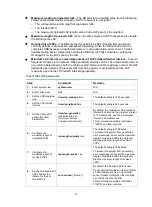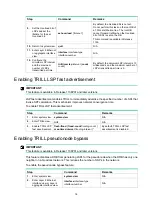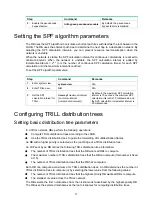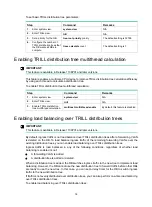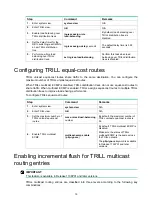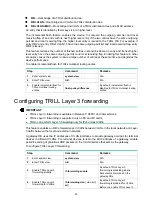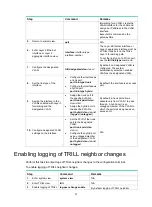
6
Figure 5 TRILL Layer 3 forwarding
When an access RB receives a unicast frame from a terminal device, the RB encapsulates the frame
into a TRILL frame and sends it to the gateway RB. The gateway RB then de-encapsulates the
TRILL frame for Layer 3 forwarding.
A gateway RB uses the IP addresses of VLAN interfaces to provide gateway services for terminal
devices in different VLANs.
For terminal devices to learn the MAC address of a gateway, enable periodic sending of gratuitous
ARP packets on the VLAN interface that acts as the gateway. For information about gratuitous ARP,
see
Layer 3—IP Services Configuration Guide
.
Ping TRILL and tracert TRILL
IMPORTANT:
Ping TRILL and tracert TRILL are available in Release 1138P01 and later versions.
You can use ping TRILL and tracert TRILL to test TRILL network connectivity when network failure
occurs or new RBs are added to the network.
Ping TRILL and tracert TRILL are implemented through the TRILL Operation, Administration, and
Maintenance (OAM) protocol.
Ping TRILL
Use ping TRILL to determine if an RB is reachable.
As shown in
, the source RB sends OAM echo requests to ping the destination RB. Upon
receiving the requests, the destination RB responds to the source RB with OAM echo replies. The
source RB outputs statistics about the ping TRILL operation, including the number of sent echo
requests, the number of received echo replies, and the round-trip time. You can measure the
network performance by analyzing the statistics.
Access
IP network
RB 1
(
Gateway
)
RB 2
RB 3
RB 4
RB 5
RB 6
Distribution
TRILL network
VLAN 100
VLAN 100
VLAN 200
VLAN 200

















